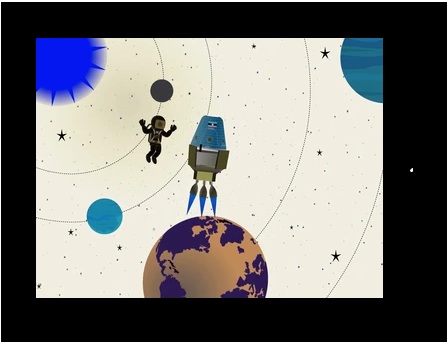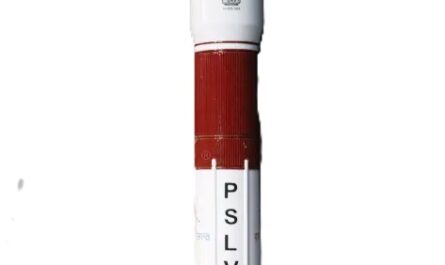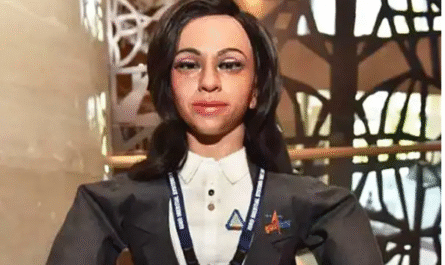🇮🇳 Gaganyaan Mission: India’s Leap into Human Spaceflight 🚀
India is poised to take a monumental leap in space exploration with its ambitious Gaganyaan Mission — the country’s first manned spaceflight initiative. Spearheaded by the Indian Space Research Organisation (ISRO), this historic mission is not just a technical marvel but also a symbol of national pride and scientific progress.
🌌 What is Gaganyaan?
Gaganyaan (meaning “Sky Vehicle” in Sanskrit) is India’s first crewed orbital spacecraft mission, aiming to send Indian astronauts—Gagannauts—into low Earth orbit (LEO). It will mark India as the fourth country in the world to independently send humans into space, after Russia, the USA, and China.
📅 Timeline of the Mission
-
2022–2023: Several critical uncrewed test flights were planned to test safety and systems.
-
2024–2025: Expected timeline for the first uncrewed mission with humanoid robot “Vyommitra”.
-
Late 2025 or 2026: Target window for the first crewed Gaganyaan mission.
🧑🚀 Mission Objectives
-
To demonstrate human spaceflight capability.
-
To send a crew of 3 Indian astronauts into a 400 km orbit for a 3-day mission.
-
To ensure safe return through controlled re-entry and ocean recovery.
🚀 Gaganyaan Mission Components
1. Human-Rated Launch Vehicle (HRLV)
-
Based on the GSLV Mk III (Geosynchronous Satellite Launch Vehicle Mark III), renamed HLVM3 for human missions.
-
Modified for enhanced safety and redundancy.
2. Orbital Module
-
Comprises:
-
Crew Module (CM): Pressurized capsule housing astronauts.
-
Service Module (SM): Contains support systems like power, propulsion, and thermal regulation.
-
3. Crew Escape System (CES)
-
A critical safety system to abort the mission during emergencies and safely recover astronauts.
👨🚀 Who are the Gagannauts?
ISRO has selected four Indian Air Force pilots, trained in collaboration with Russia’s Gagarin Cosmonaut Training Center. They have undergone:
-
Zero-gravity simulations
-
Survival training
-
Parachute recovery drills
-
Medical and psychological tests
Though their names are not officially released, all four are experienced test pilots with high physical and mental endurance.
🤖 Meet Vyommitra: The Indian Space Robot
In an uncrewed precursor to Gaganyaan, ISRO will send Vyommitra, a semi-humanoid robot. Vyommitra can:
-
Mimic human functions
-
Monitor cabin conditions
-
Interact with the ground team
-
Assist in testing life-support systems
🌍 International Collaborations
-
Russia: Training of astronauts and technical support.
-
France (CNES): Assistance with space medicine and crew safety.
-
USA (NASA): Possible collaborations in the future for mission support.
🛰️ Gaganyaan vs Other Crewed Missions
| Country | First Crewed Mission | Notable Program |
|---|---|---|
| Russia (USSR) | 1961 (Yuri Gagarin) | Vostok, Soyuz |
| USA | 1961 (Alan Shepard) | Mercury, Apollo, Space Shuttle |
| China | 2003 (Yang Liwei) | Shenzhou |
| India | Expected 2025–26 | Gaganyaan |
🛠️ Challenges Faced
-
Developing life support and environmental control systems from scratch.
-
Ensuring the human-rating of launch vehicles and modules.
-
Safety during launch, orbit, re-entry, and ocean recovery.
-
Managing heat, G-forces, and microgravity impact on the human body.
🇮🇳 Why Gaganyaan Matters
-
National Pride: Boosts India’s position in the elite spacefaring nations.
-
Scientific Advancements: Enhances knowledge in aerospace engineering, bioastronautics, and materials science.
-
Industrial Growth: Drives innovation in AI, robotics, navigation, and manufacturing.
-
Inspiration: Ignites curiosity and ambition in young Indians to pursue science and space research.
🔮 What’s Next After Gaganyaan?
ISRO’s vision extends beyond Earth orbit:
-
Space Station by 2035
-
Manned Lunar Mission in collaboration with international partners
-
Advancements in deep space exploration and planetary missions
✨ Conclusion
The Gaganyaan mission is not just a journey into space—it’s a journey of a nation toward self-reliance in space exploration. As countdowns begin and the rocket engines roar, Gaganyaan will carry not just astronauts but the dreams of over a billion Indians into the vast expanse of the cosmos.
Let’s get ready to witness history.





